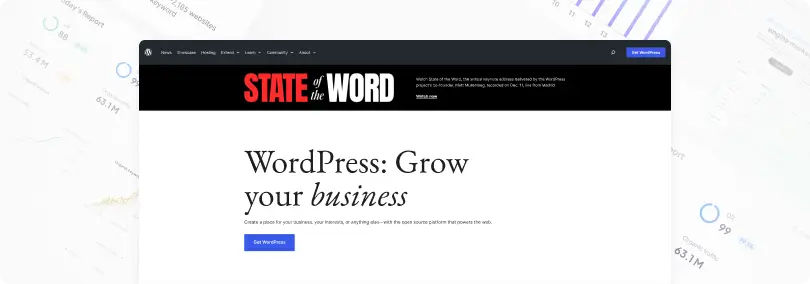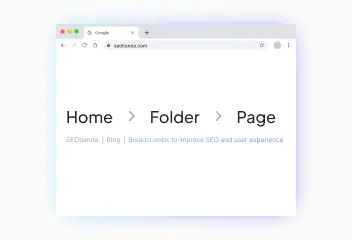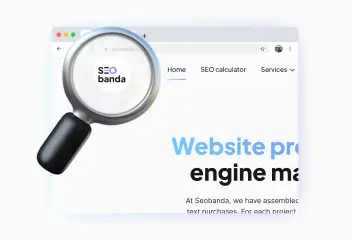Features of SEO Website Promotion on WordPress: Modern trends
Implementing successful digital marketing initiatives requires a harmonious integration of SEO and WordPress strategies. WordPress offers enormous potential, but to fully realize its capabilities, you need to stay up to date with the latest WordPress SEO trends. In this article, we’ll look at best practices for unlocking the power of your website through optimized promotion. Let’s start by understanding what WordPress SEO is.



What is SEO for WordPress?
SEO optimization WordPress is a set of techniques aimed at improving the crawlability, indexing and search engine positioning of websites using a CMS. We are going to show you tips and techniques that will help Google give you online visibility and attract more visitors and traffic.


SEO tips for WordPress: how to improve SEO in WordPress
For optimal website performance, it’s crucial to implement effective WordPress search engine optimization strategies. Let’s start with the fact that if your site is not ready and finished, you may have to not show it in search results. WP has an option to “prevent search engines from indexing this site.” This command will ensure that Google will not index it, will ignore its existence and therefore potential visitors will not find it in the search engine.
It is important to distinguish between indexing and positioning in Google. Indexing involves having your site in a database, while positioning is all about driving traffic and visibility. No additional steps are required for indexing: if the “deny indexing” option is not selected, the site will be automatically indexed, without the need for additional commands such as “noindex” on web pages. Let’s take a closer look at the tools to improve SEO WordPress, including powerful SEO plugins that provide security with SSL certificate installation, improve navigation through creating a main mirror, optimizing URLs, preventing duplicate pages, creating robots.txt and sitemap files .xml for efficient indexing. Adding Schema.org microdata enriches search results, making your content stand out and more informative.

WordPress SEO plugins
You don’t need to use WordPress website SEO plugins to optimize your pages. With basic SEO knowledge and staying up to date with algorithm changes, you can get great results without relying on plugins. WordPress already offers built-in tools like a content management system (CMS) that let you add titles, meta descriptions, headings, alt text, tags, customize URLs, and more, making it easy to create SEO-optimized content.
Some SEO plugins, like Yoast SEO, go above and beyond when it comes to improving your content for search engines. For example, they help you avoid overusing precise keywords and provide tips for improving the readability of your content. Here is a list of some of them:

- Yoast SEO: Essential for fine-tuning on-page SEO elements with real-time content analysis.

- Rank Math: Simplify the complex world of SEO with a user-friendly interface and features like rich snippets and SEO audits.

- All in One SEO Pack: Ideal for beginners, automates meta tag creation and provides optimization basics.

- SEOPress: Multifunctional plugin with Google Analytics integration, breadcrumb support and social media metadata management.

- Schema Pro: Improves your site’s appearance in search results using rich snippets.
While search engine optimization wordpress plugins can provide guidance, the primary responsibility for optimization remains in your hands.
Installing an SSL certificate
Installing an SSL (Secure Sockets Layer) certificate is an important step in increasing the security and reliability of your website. SSL not only protects against potential security threats, but also has a positive impact on search engine rankings as major search engines prioritize secure websites.
Here are the steps to install an SSL certificate:
- Go to “Set up and manage SSL for your site (HTTPS)” in your site’s control panel.
- Click “Manage SSL Sites” to access the SSL management section.
- Scroll down to the Install Website SSL option and click Browse Certificates.
- From the available certificates, select the one you want to activate for your site.
- Click “Use Certificate” to automatically fill in the required fields with certificate information.
Formation of the main mirror
The main mirror is the main address of the site, without www or with www. For example seobanda.com or www.seobanda.com. Setting up a primary site mirror is critical for various reasons such as development, testing, or staging environment. This allows you to experiment with changes, test updates, and ensure the stability of your site before committing changes to the live version.
To determine the main mirror, look in the hosting settings which address is specified as the main one.
- In the WordPress panel, go to Settings – General and select the main mirror.
- Install a redirect plugin that will redirect from www to non-www or vice versa.
- Check that the links on the site lead to the main mirror. Correct if necessary.
- Install an SSL certificate on the main mirror.
- Set up SEO plugins, meta tags, site speed.
- Create a sitemap and add the main mirror to Google Search Console.
- Add content and links from the main mirror.
Creating an SEO optimized URL

First of all, for WordPress SEO optimization, it is important to improve the permalink structure, i.e. page URLs, by changing the default structure. In fact, you need to make the URLs readable and user-friendly. The goal is to insert relevant keywords into the permalinks that reflect the content of the page. For example: the page you are reading talks about SEO promotion. For this reason, its address, that is, the permanent link, is seobanda.com/our-services/seo-promotion/. However, if you leave the default settings, the address will be unreadable, for example, seobanda.com/?p=1057.
An unreadable URL is unappealing and doesn’t help you understand the content. Steps to set readable URLs in WordPress:
- Access your WordPress dashboard and navigate to “Settings” in the main menu.
- Select “Permalinks” from the dropdown menu.
- Within the Permalinks settings, choose the “Post Name” option.
- Save changes to apply the selected permalink structure.
Avoid using URLs that are too long as they are not easy to remember and can therefore have a negative impact on the user.
Eliminate duplicate pages
To eliminate duplicate pages on your website, follow these steps:
- Identification of duplicates. Use tools like Google Search Console or website auditing tools to identify duplicate content or pages.
- Canonization. Apply canonical tags to indicate the preferred version of the page. This will help search engines understand which page is considered the main one.
- 301 Redirects. If you have multiple URLs leading to the same content, set up 301 redirects to direct traffic from duplicate URLs to the canonical URL. This consolidates the authority of the page.
- Using Noindex. Add a noindex meta tag to the HTML header section on duplicate pages. This instructs search engines not to index these pages.
- Consistent URL structure. Maintain consistent URLs on your website to avoid unwanted duplication.
- Checking internal links. Make sure internal links point to the canonical version of the page and not duplicate URLs.
- Careful use of parameters. If your website uses URL parameters, make sure they don’t create duplicate content. Configure Google Search Console to correctly process URL parameters.
- Regular audits. Conduct regular audits of your website for duplicate content and immediately take necessary action to eliminate them.
Creating robots.txt and sitemap.xml
The robots.txt file and the sitemap are tools that give search engines information on how to index the pages of a site.
- Sitemap
- The sitemap communicates to Google the structure of your site’s pages, making it easier for crawlers to understand the contents.
- It is especially useful for large, new, or sites with limited links.
- It can be created in various formats, but the *.xml format is recommended.
- They allow you to highlight important pages through metadata such as update frequency and crawling priority.
- You can create it with plugins like Yoast SEO on WordPress or use online tools like Google Sitemap Generator.
- Robots.txt
- The robots.txt file provides instructions to search engines on which pages not to index.
- Avoid entering confidential information, as the file is publicly accessible.
- Use commands like “user-agent”, “disallow”, and “allow” to specify rules.
- You can check its accuracy in Google Search Console through the “Robots.txt tester” section.
Both the sitemap and the robots.txt file are essential for effective indexing of your WordPress site. Consult Google’s Search Console to check and optimize both tools.
Adding Schema.org microdata
Schema.org serves as a collaborative initiative defining a standardized set of microdata tags for HTML. Its primary goal is to establish uniform HTML tags across websites, enhancing the generation of multimedia-rich search results for specific topics. This initiative plays a pivotal role in advancing the semantic web, where the focus is on rendering document codes more intelligible and meaningful for both human users and machines. By adhering to Schema.org guidelines, websites contribute to a web landscape that promotes consistency and clarity in content representation.
To add Schema.org microdata to your website:
- Determine which content types, like articles or products, would benefit from Schema.org markup.
- Opt for a markup format such as JSON-LD, which is straightforward and widely recommended.
- Visit schema.org to understand the available schemas and their properties.
- Insert the Schema.org markup directly into your HTML.
- Use Google’s Structured Data Testing Tool to check for errors and ensure accurate implementation.
- Extend Schema.org microdata to different content types across your site, like products or events.
- Check Google Search Console for any warnings related to your structured data.
- Stay informed about Schema.org updates for the latest features and improvements.
You should only tag content that is actually visible to people visiting the web page, and therefore don’t use Schema.org for content in hidden elements or hidden sections.

Increase visibility
for your business: SEO solution for growth!


Need help with SEO for WordPress?
Increase the visibility of your WordPress site with SEObanda’s expert SEO solutions designed specifically for WordPress. Whether it’s optimizing URLs, implementing Schema.org microdata, or providing secure SSL certificates, our dedicated team specializes in improving SEO for WordPress websites. Let’s understand the complexities and improve your website’s performance in search engine rankings.
You may also like it

Breadcrumbs to improve SEO and user experience
Breadcrumbs are a navigation element on a web page that helps users understand their location on the site and makes it easier to return to previous sections. They...

HTTP status codes: What do they mean and why are they important for SEO?
HTTP status codes are short three-digit responses that a website server provides to a client's browser in response to a request. Each http response code has its own...

Logo for the website: How to create a cool logo?
A logo is the visual face of your brand. It creates the first impression of your business and influences its recognition. Try to think of the logos of Nova Poshta...












